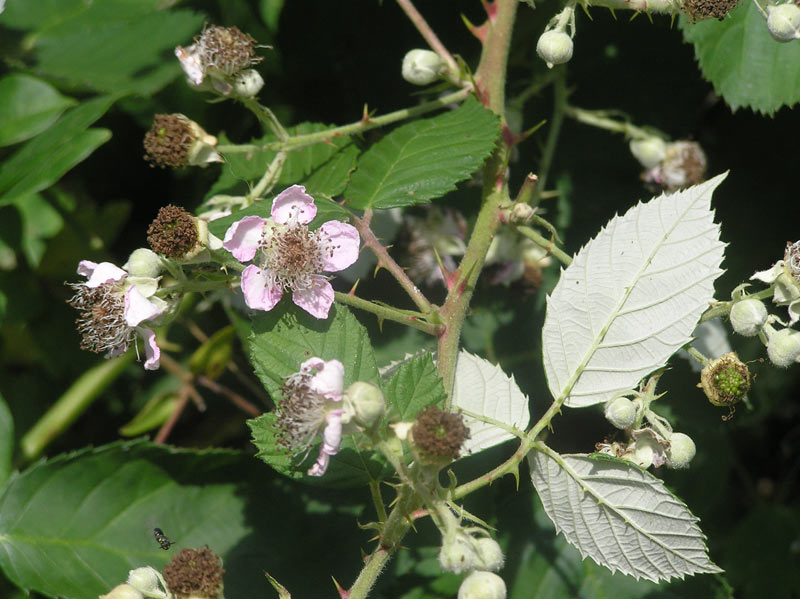There’s more than one kind of blackberry

Distinctive white leaf underside of pink-flowered Himalaya-berry. Photo by Ken Moore
By Ken Moore Flora Columnist
The Fourth of July is here, traditional blackberry-picking time. I enjoyed seeing a Dad and two youngsters out on bikes picking berries along one of Carrboro’s inner-city country lanes during the past weekend. The huge briery berry patch in my wild yard is heavy with fruit, though sadly not as large as hoped for. Our little climatic dry spot on the western edge of Carrboro simply has not been blessed with the recent rains falling all around us.
However, I am thankful to have a couple of colanders full of juicy “little†berries, which I enjoy on cereals, and hopefully will gather enough more to freeze for later. I have more than a couple of scratches on arms and legs because our deer have selectively harvested from the outer edge of the patch. Cutting one’s way into the center is a sticky, though rewarding, effort. I’m hoping that some of these afternoon showers will cross over our patch because there are still lots of red berries with potential.
Every year I am stopped in my tracks to take in the visual of the unripened red berries contrasting with the jet-black ripened ones, as beautiful as any arrangement of flowers. So take time to admire the beauty while picking the anticipated savory treat.
Now here’s a challenge for you. There are other wild blackberries among us. There is one running loose in and around Carrboro. It’s called an “alien blackberry†because it was introduced from Europe, who knows how long ago. It’s uncommon and worth a search in your wild garden and along roadsides and woods and field edges in your neighborhood. I’ve successfully transplanted some from the edge of the driveway to my little house within Carrboro to the edge of the driveway to my house here on the western edge of Carrboro. It has just finished flowering, two months behind the common Southern Blackberry (Rubus argutus).
I’m looking forward to this Himalaya-berry (Rubus discolor) bearing delicious fruit in another couple of weeks. I have just a few of them, so I will consider watering them if there is no rain on my horizon. The flowers are a beautiful pale pink and the backs of the leaves are a distinctive velvety white. I remember tasting the sweetness of this foreign berry some years ago. It is well worth cultivating in a garden bed where it can be well tended and trained along a trellis or wire frame for easy viewing and picking. Good luck with your search. And along the way, your keen eyes will discover lots of other wonderful plants.
Email Ken Moore at flora@carrborocitizen.com.
Find more Ken Moore Citizen columns at The Annotated Flora


Comments are closed.